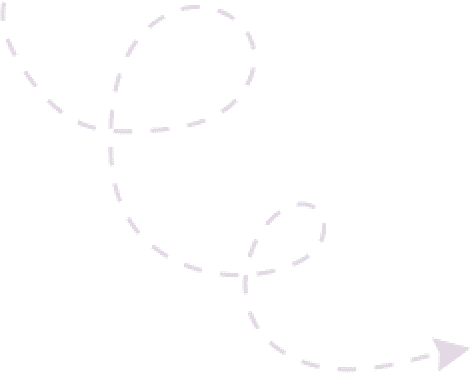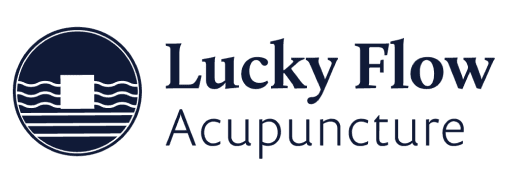Cupping therapy has been used for centuries to treat a variety of ailments and is said to be helpful in detoxifying the body. The therapy involves placing cups on the skin and creating suction. The suction is said to help draw out toxins from the body and improve circulation.
Cupping is said to be beneficial in detoxifying the body because it helps to draw out toxins that have accumulated in the tissues. Toxins can come from many sources, including the environment, food, and stress. When these toxins build up, they can cause a variety of problems, including fatigue, headaches, and digestive issues.
Cupping is said to help the body get rid of these toxins by improving circulation and lymphatic drainage. The improved circulation helps to move the toxins out of the tissues and into the bloodstream where they can be eliminated by the kidneys and liver. The improved lymphatic drainage helps to reduce swelling and inflammation.
Where Cupping Is From
Cupping has been around for thousands of years. The ancient Egyptians used it for medical purposes, and it’s been a traditional Chinese medicine practice for even longer. It is generally considered safe when done by a trained practitioner. There may be some bruising from the cups, but these will disappear within a few days. Cupping is often used as a complementary therapy, which means it’s used alongside conventional treatments, but it can be an excellent stand-alone treatment. For example, if you have cancer, you may receive cupping along with chemotherapy and radiation.
Cupping is usually done with glass cups. The therapist will heat the air inside the cup, which creates suction when the cup is placed on your skin. The cup is then left in place for a few minutes before being removed. You may feel a temporary tightness or tingling sensation when the cup is first applied. This is normal and should go away within a few minutes. The treatment is typically done on the back, but it can also be done on other parts of the body. A session usually lasts 10-15 minutes.
As mentioned above, cupping is a form of alternative medicine in which a cup is placed on the skin to create a vacuum. This vacuum can help to stretch the skin and muscles, increase blood flow, and encourage healing. Cupping is often used on the back, shoulders, neck, arms, or legs. When the cup is applied to the skin, the suction pulls up on the skin and muscle. This action can help to stretch the tissue and draw fresh, oxygenated blood from the surrounding area to the muscle being treated. The increased blood flow can help to flush out the area and speed up recovery.
Cupping is not painful, and most patients report that it feels much like a massage. The exact sensation will depend on the area being treated and the goals of the treatment. When performed by a trained professional, cupping is a safe procedure. However, it should be used with caution in certain conditions. Generally speaking, cupping is safe for most people, but it is not recommended for those with fragile skin, sunburned skin, or skin ulcers. The technique should not be performed on patients with heart disease, diabetes, or any other serious health condition. Acupuncturists should discuss the risk and benefits with patients before performing cupping on them.
Cupping Treatment For Ailments
The use of cupping for pain relief is a traditional therapy. Its benefits may differ for different patients, but it is believed to reduce pain intensity compared with other forms of treatment. Another benefit of cupping is that it reduces the circulating toxins by drawing them into the skin. It also promotes healing by stimulating the meridians and promoting the free flow of Qi. By creating negative pressure using suction cups, cupping also reduces inflammation through a mechanism similar to reverse massage. This procedure helps the body to recover faster and reduces the number of treatments needed.
Cupping therapy can also decrease the intensity of pain by influencing the pathways through which pain signals are transmitted to the brain. Neurons carry pain signals from the skin to the spinal cord. The dorsal horn of the spinal cord has transmission cells that modulate pain. This process involves the activation of a network of presynaptic pain gates and interneurons. When these cells are stimulated by the stimulation from cupping, it partially closes the presynaptic gate, allowing more transmission signals to reach the spino-thalamo-cortical pain pathway.
Cupping therapy is an alternative treatment used to help with muscle recovery. It can be used after any type of physical activity, including intense workouts or sports. Athletes need to work hard to enlarge and make their muscles stronger, and they often experience soreness after intense workouts. After cupping, athletes can feel relief from the muscle pain and return to sports and competition. It works by increasing blood flow to muscles and tissues, draining waste products and replacing them with oxygen and nutrients. This treatment can be very effective, and can even help you recover faster after an injury.
Cupping is an excellent treatment for people suffering from inflammation or more severe muscle aches and pains. The suction is thought to reduce inflammation and reduce the appearance of fine lines and wrinkles. It can also help with respiratory problems and digestive issues. In addition, cupping can help reduce pain, speed up recovery, and reduce the symptoms of certain illnesses. However, this procedure is not without risk. The area around the cups may bruise after the treatment, but as mentioned, the bruises are typically small and heal on their own.
If you’ve ever had stretch marks, you may be wondering if cupping can help. While it may not be the most relaxing therapy, cupping can have a tremendous impact on your skin and underlying tissues. It can help reduce the appearance of stretch marks and other signs of aging. Plus, it can give you radiant skin and increased energy. Not to mention, cupping can help reduce stress, improve circulation and improve overall wellbeing. It is believed that stress can cause stretch marks to form because it weakens the elastic fibers in the skin. Those who are stressed are more prone to scars and stretch marks.
As with other forms of manual therapy, cupping therapy allows the body to bring fresh, oxygenated blood into the soft tissue and remove metabolic waste. When done properly, manual therapists can also realign fibers and improve function.
Benefits Of Cupping Therapy
Your body is exposed to a lot of toxins every day. These toxins come from the food you eat, the water you drink, and the air you breathe. Over time, these toxins can build up in your body and make you sick.
Here are some potential benefits of cupping therapy:
1. Reduces pain
Cupping therapy may help reduce pain by breaking up adhesions and knots in your muscles. This may help increase blood flow and promote healing.
2. Increases blood flow
The suction created by cupping helps increase blood flow to the area where the cups are placed. This may help improve muscle recovery and reduce inflammation.
3. Relieves anxiety and stress
Cupping therapy may help relieve anxiety and stress in people with cancer.
Cupping therapy may help aid digestion by stimulating the digestive system and improving blood flow to the abdomen.
5. Reduces inflammation
Cupping therapy may help reduce inflammation by increasing blood flow and promoting tissue repair.
6. Boosts immunity
Cupping therapy may help boost immunity by stimulating the production of white blood cells in people with cancer.
7. Detoxifies the body
Cupping therapy may help detoxify the body by promoting blood flow and stimulating the lymphatic system.
8. Improves skin conditions
Cupping therapy may help improve skin conditions such as acne, eczema, and psoriasis.
9. Reduces the side effects of chemotherapy
Cupping therapy may help reduce the side effects of chemotherapy, such as fatigue and nausea.
10. Promotes healing
Cupping therapy may help promote healing by increasing blood flow and stimulating the production of collagen.
Types Of Cupping Therapy
There are different types of cupping, including:
Dry cupping: The therapist will put the cups on your skin and then use a suction device to remove the air from the cups, which will create the suction.
Wet cupping: The therapist will make small incisions on your skin and then put the cups over the area. The suction will draw blood into the cups, and then the therapist will remove the cups and the blood.
Fire cupping: The therapist will put an ignited object, such as a cotton ball soaked in alcohol, into the cup and then quickly place the cup on your skin. The heat will create the suction.
Cupping therapy is generally considered safe, but there are some risks, such as:
Bruising: Cupping can cause bruising, especially if the cups are left in one place for too long.
Burns: Fire cupping can cause burns.
Infection: There is a small risk of infection, especially if the cups are not clean.
Cupping therapy is not recommended for pregnant women or for people with bleeding disorders or taking blood thinners. Always consult your physician before you undergo any health treatments.


